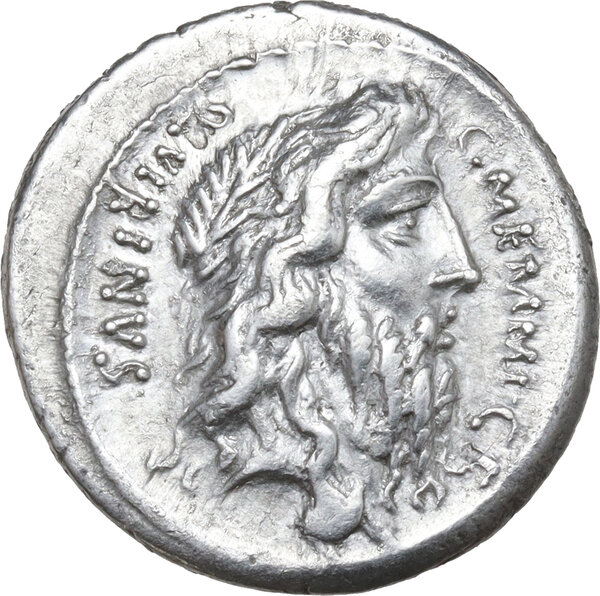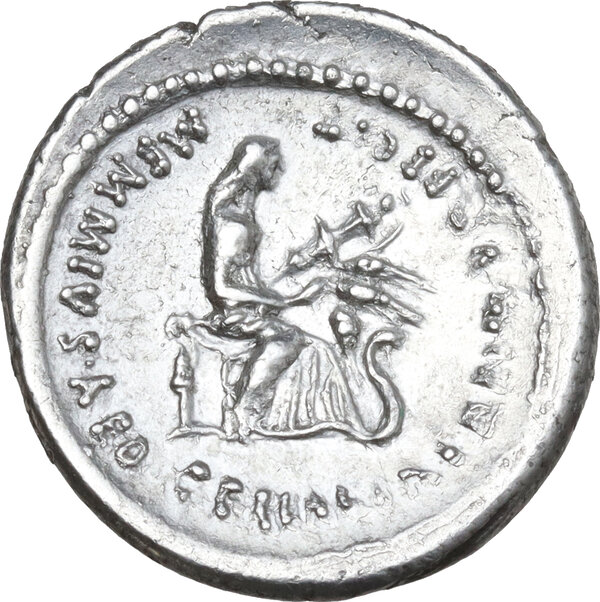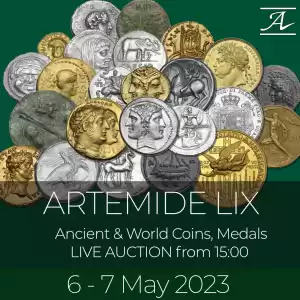Impressive Romulus Quirinus


C. Memmius. AR Denarius, 56 BC. Obv. Laureate and bearded head of Romulus Quirinus right; before, C·MEMMI·C·F; behind, QVIRINVS. Rev. MEMMIVS·AED·CERIALIA·PREIMVS·FECIT. Ceres seated right, holding torch and corn ear; at her feet, snake. Cr. 427/2; B. (Memmia) 9. 3.77 g. 19.00 mm. Great metal and broad flan. A superb example, perfectly centred and detailed, brilliant with underlying luster and golden hues. Good EF. The obverse relates to the claimed origin of the gens Memmia from the Trojan Menestheus, through Romulus. The reverse (as well the previous obverse) refers to the Institution at Rome of the Ludi Cereales, festivals celebrated at Rome in honour of Ceres. 'In B.C. 493 the worship of Demeter (under the name of the old Italian goddess Ceres) was introduced at Rome by the direction of the keepers of the Sibylline books, and a temple was built in her honour (aedes Cereris Liberi Liberaeque, usually called aedes Cereris) near the Circus Maximus. The ritual was entirely Greek, the priestesses were Greeks, and the prayers offered were in Greek . In connexion with this worship, games were instituted under the direction of the plebeian aediles. The festival was properly a plebeian one, but the patricians were invited to take part in it . At first the games were held only on extraordinary occasions , but afterwards they were celebrated annually from the 12th to the 19th of April, the last day being called especially the Cerialia. This spring festival was intended to commemorate the return of Proserpine to earth; hence all who took part in it were dressed in white. No bloody sacrifice was permitted, except that of a sow; the offerings consisted of cakes, honey, and incense. It was celebrated with games in the circus, but with no scenic representations before the time of Augustus. On the last day there was in the country a procession round the fields , in the town a procession to the circus'. (A Dictionary of Greek and Roman Antiquities. William Smith, LLD. William Wayte. G. E. Marindin. Albemarle Street, London. John Murray. 1890).


